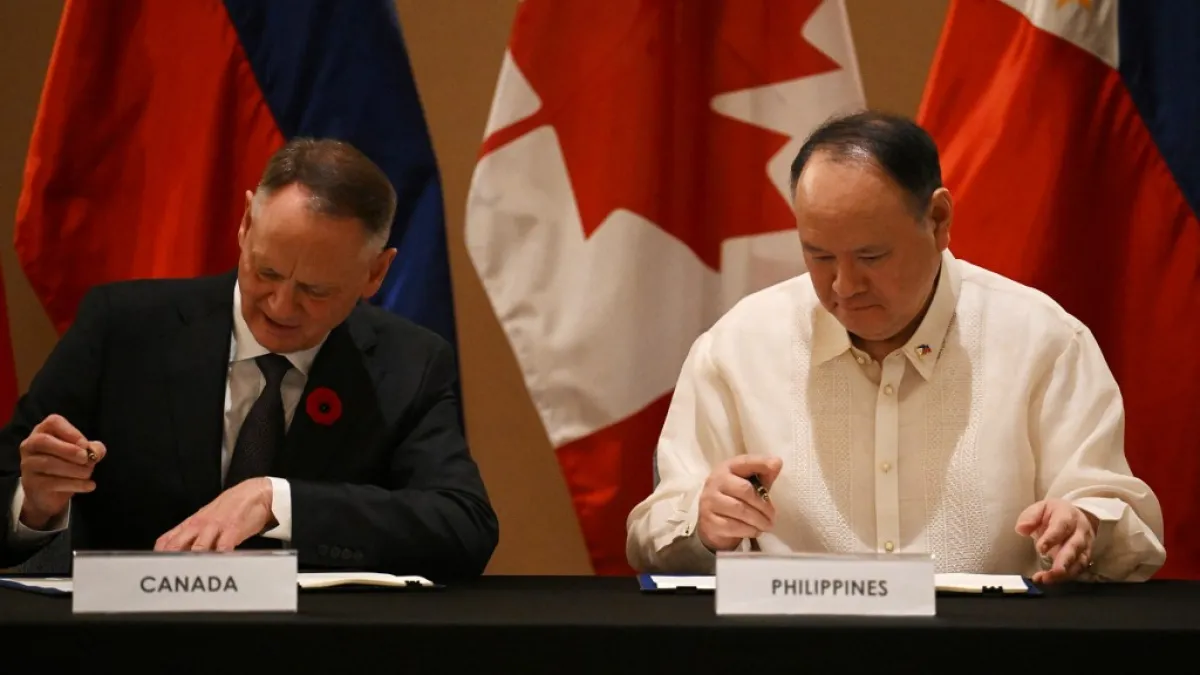Canada, Philippines sign defence pact to deter Beijing in South China Sea | Conflict News
China has frequently accused the Philippines of acting as a ‘troublemaker’ and ‘saboteur of regional stability’.
Published On 2 Nov 2025
The Philippines and Canada have signed a defence pact to expand joint military drills and deepen security cooperation in a move widely seen as a response to China’s growing assertiveness in the region, most notably in the disputed South China Sea.
Philippine Defence Secretary Gilberto Teodoro Jr and Canadian Defence Minister David McGuinty inked the Status of Visiting Forces Agreement (SOVFA) on Sunday after a closed-door meeting in Manila.
Recommended Stories
list of 3 itemsend of list
McGuinty said the deal would strengthen joint training, information sharing, and coordination during humanitarian crises and natural disasters.
Teodoro described the pact as vital for upholding what he called a rules-based international order in the Asia-Pacific, where he accused China of expansionism. “Who is hegemonic? Who wants to expand their territory in the world? China,” he told reporters.
The agreement provides the legal framework for Canadian troops to take part in military exercises in the Philippines and vice versa. It mirrors similar accords Manila has signed with the United States, Australia, Japan and New Zealand.
China has not yet commented on the deal, but it has frequently accused the Philippines of being a “troublemaker” and “saboteur of regional stability” after joint patrols and military exercises with its Western allies in the South China Sea.
Beijing claims almost the entire waterway, a vital global shipping lane, thereby ignoring a 2016 international tribunal ruling that dismissed its territorial claims as unlawful. Chinese coastguard vessels have repeatedly used water cannon and blocking tactics against Philippine ships, leading to collisions and injuries.
Teodoro used a regional defence ministers meeting in Malaysia over the weekend to condemn China’s declaration of a “nature reserve” around the contested Scarborough Shoal, which Manila also claims.
“This, to us, is a veiled attempt to wield military might and the threat of force, undermining the rights of smaller countries and their citizens who rely on the bounty of these waters,” he said.
Talks are under way by the Philippines for similar defence agreements with France, Singapore, Britain, Germany and India as Manila continues to fortify its defence partnerships amid rising tensions with Beijing.
